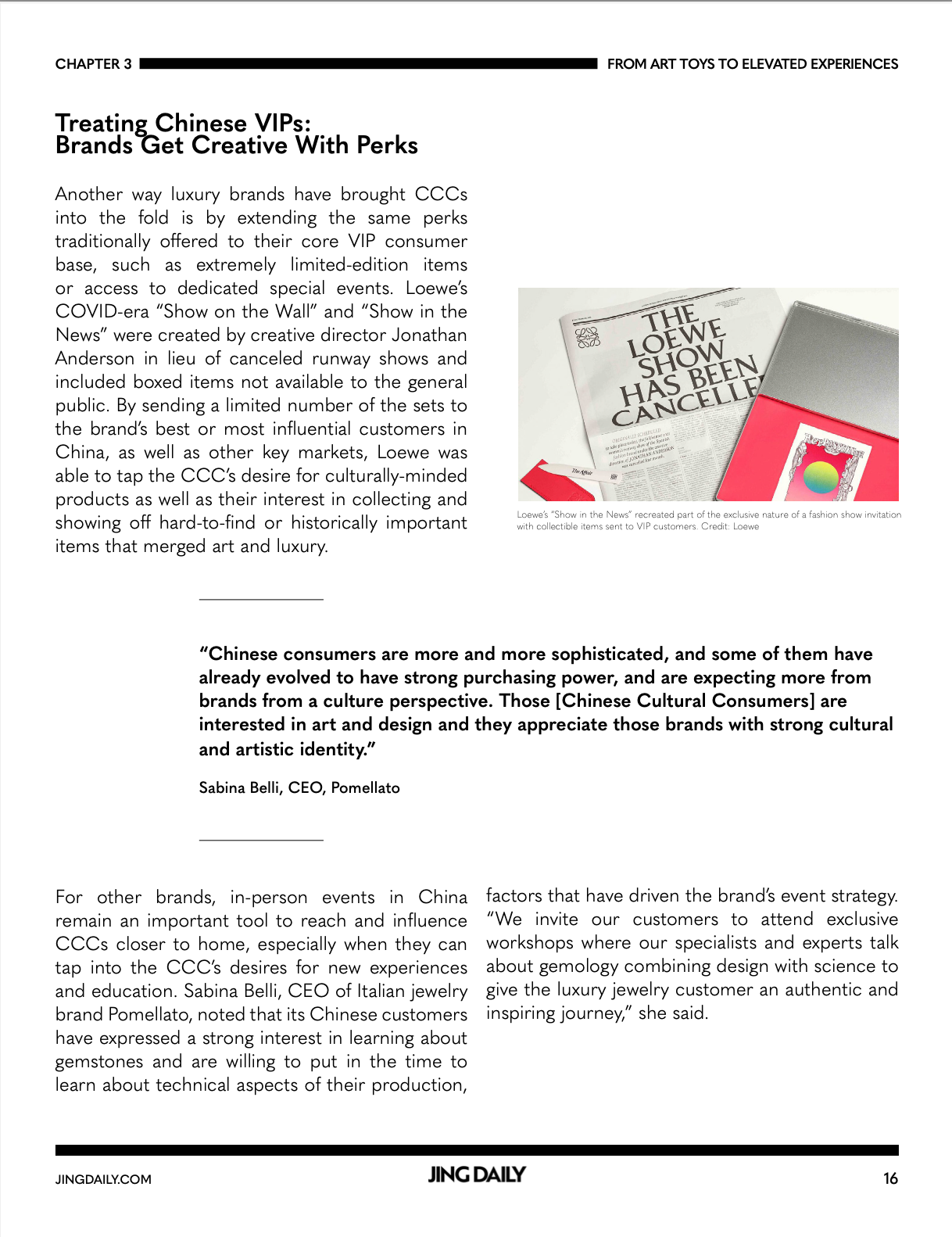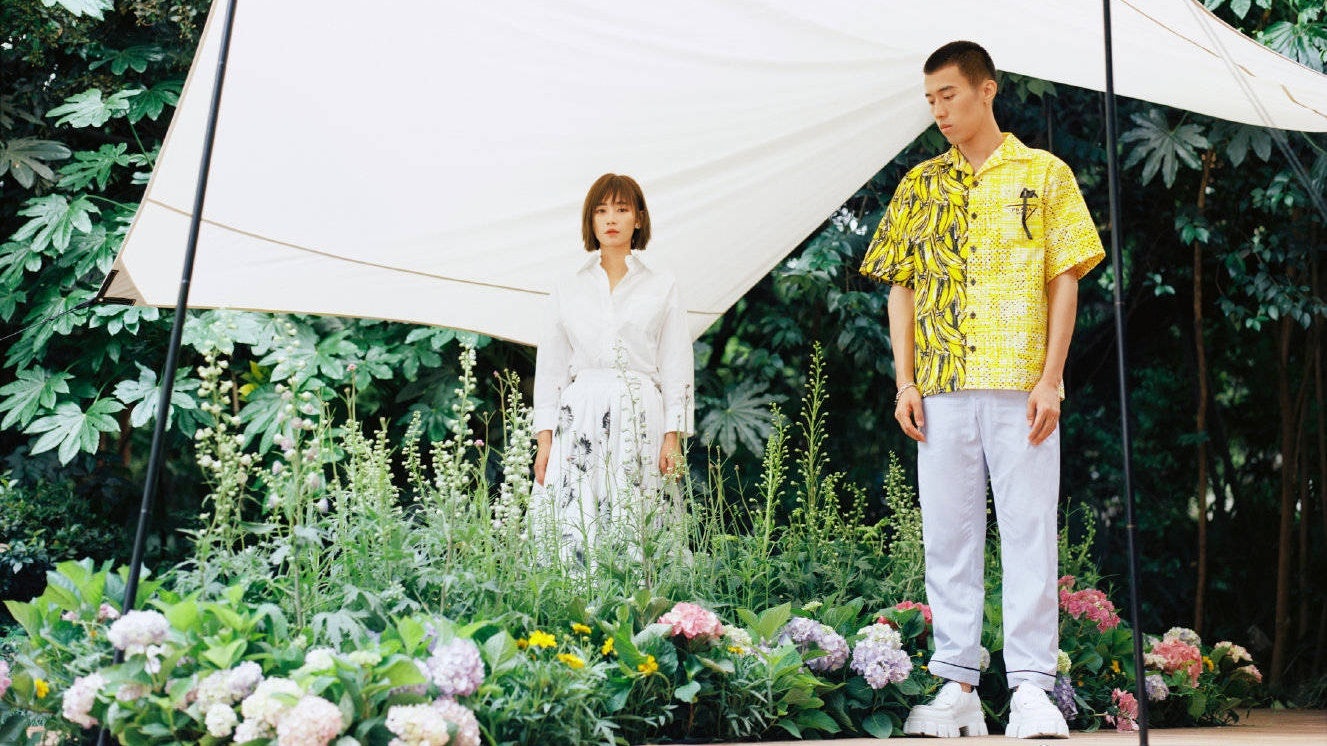Jing Daily’s new report, Chinese Cultural Consumers: The Future of Luxury, looks at a demographic that luxury brands cannot afford to ignore in the China market — the Chinese Cultural Consumer (CCC). Transcending simple generational and geographic divisions, CCCs approach consumption with a distinct cultural awareness and a concept of luxury that sets them apart from their Western counterparts. The rapid rise and evolution of this consumer class presents luxury brands with hugely significant opportunities and challenges.
Chinese Cultural Consumers are not only driving global luxury’s rebound and dominating auction sales, but also redefining industries with their appetite for pop and street culture, shifting the equation from collecting to consuming in the process. It has become imperative for luxury brands to understand what sets CCCs apart, how to reach them, and what product categories hold the greatest appeal for them. That’s where Chinese Cultural Consumers: The Future of Luxury comes in.
Below, we highlight four of the many actionable takeaways from Chinese Cultural Consumers: The Future of Luxury, now available for purchase on our Reports page.
1. CCCs have a nationalistic streak that is only set to accelerate.#
CCCs are embracing homegrown culture and heritage, and international luxury brands that are heavily invested in the Chinese market are tapping into the growing awareness of and interest in Chinese artists, designers, and traditions. While European luxury labels such as Chanel and Bottega Veneta are more heavily favored by the CCC over premium Chinese brands, 2020 was a fruitful year for domestic names and saw increased adoption of Guochao, (aka “national trend”), which incorporates Chinese cultural elements in contemporary goods.
CCCs are now finding higher quality at home via up-and-coming independent domestic labels and demonstrating national pride through their purchasing decisions, and this works both ways, as we saw with recent boycotts of brands like Nike and Burberry over their positions on cotton sourced from Xinjiang. This also ties into the popularity of traditional-style Hanfu clothing, which shifted from a traditional subculture just a few years ago to a more mainstream contemporary movement. Meanwhile, CCCs have shown a greater interest in culture and art from the past, such as classical paintings (guohua), and are gravitating towards domestic brands like Li Ning, which has managed to revitalize itself through savvy culturally-oriented marketing that touts its designed-in-China status.

Download the report on our Reports page.
2. Aesthetics are the main driver of consumption.#
A Jing Daily survey of Chinese Cultural Consumers found that aesthetics are the main driver of consumption, allowing purchases to serve as means of self-expression and reflecting a sense of individuality. The next most important factors for the CCC are exclusivity, status, and cultural significance, all of which characterize a demographic of aspiration-led consumers whose choices enhance their personal cultural capital through globally relevant signifiers and exhibit a well-rounded awareness of value. The CCC’s habits are also motivated largely by their understanding of global pop culture, which also explains their attraction to cross-sector collaborations — understanding a well-curated marriage of significant names is the ultimate badge of cultural capital in China. Collaborations can serve as a gateway for art consumption as well, with collectible toy figurines by the likes of KAWS or Daniel Arsham serving as a route for young Chinese to take their first steps into the art world.

3. CCCs are more than consumers, they’re#
collectors#
who are changing the global luxury and art markets.#
CCCs are proving to be highly deliberate spenders, focused on quality and building personal collections. Among CCCs, collecting — whether it’s rare sneakers, fine art, limited-edition handbags, or hard-to-find toys — serves longer-term goals, whether investment for future resale or the establishment of a personal legacy. Now, CCCs who buy for the sake of leisurely consumption and to build their interest-based collections are the new VIPs for top brands. This is particularly true for luxury brands that base their top consumer lists not simply on who spends the most, but what they spend on, their personal networks, and their particular personal tastes. Moreover, for the luxury market, this represents an important sea-change that will make it more difficult for traditional VIP shoppers in Europe, North America, and Japan to get their hands on the most sought-after products.
4. CCCs have gone all-in on “New Retail.”#
Among CCCs, the boundaries between online and offline consumption are increasingly fluid. Coined by Alibaba founder Jack Ma in 2017, the term “New Retail” describes the digital integration of physical experiences as the future of shopping. New Retail offers immediacy, fluidity, and the seamless customer journey that Chinese consumers are already accustomed to from their use of apps like WeChat and the “see-now, buy-now” model of e-commerce livestreaming, with one purchase channel used for all purposes, from product discovery to delivery to customer service. The CCC lives and breathes convenience, whether that is through “phygital” shopping, seamlessly integrated “shoppertainment,” or the ability to gain product knowledge at the tap of a finger. They embrace physical experiences that are digitally enhanced and look to brands that can meet their familiarity with social commerce along with an understanding of China’s heritage.
